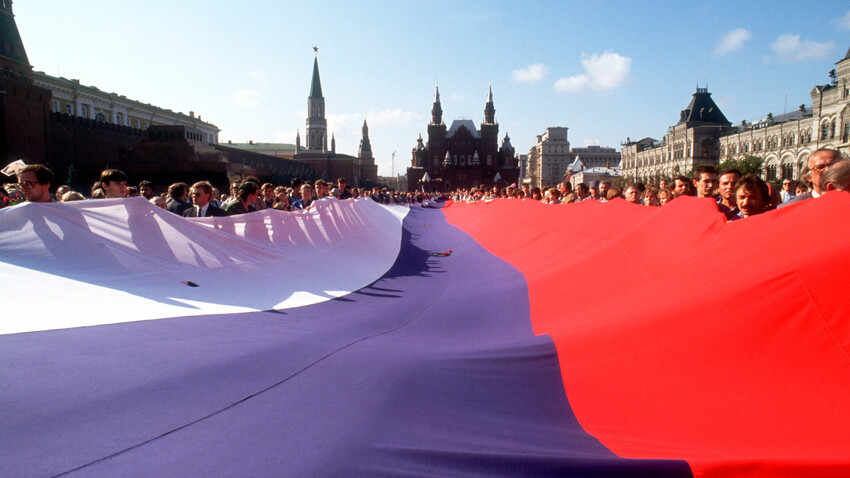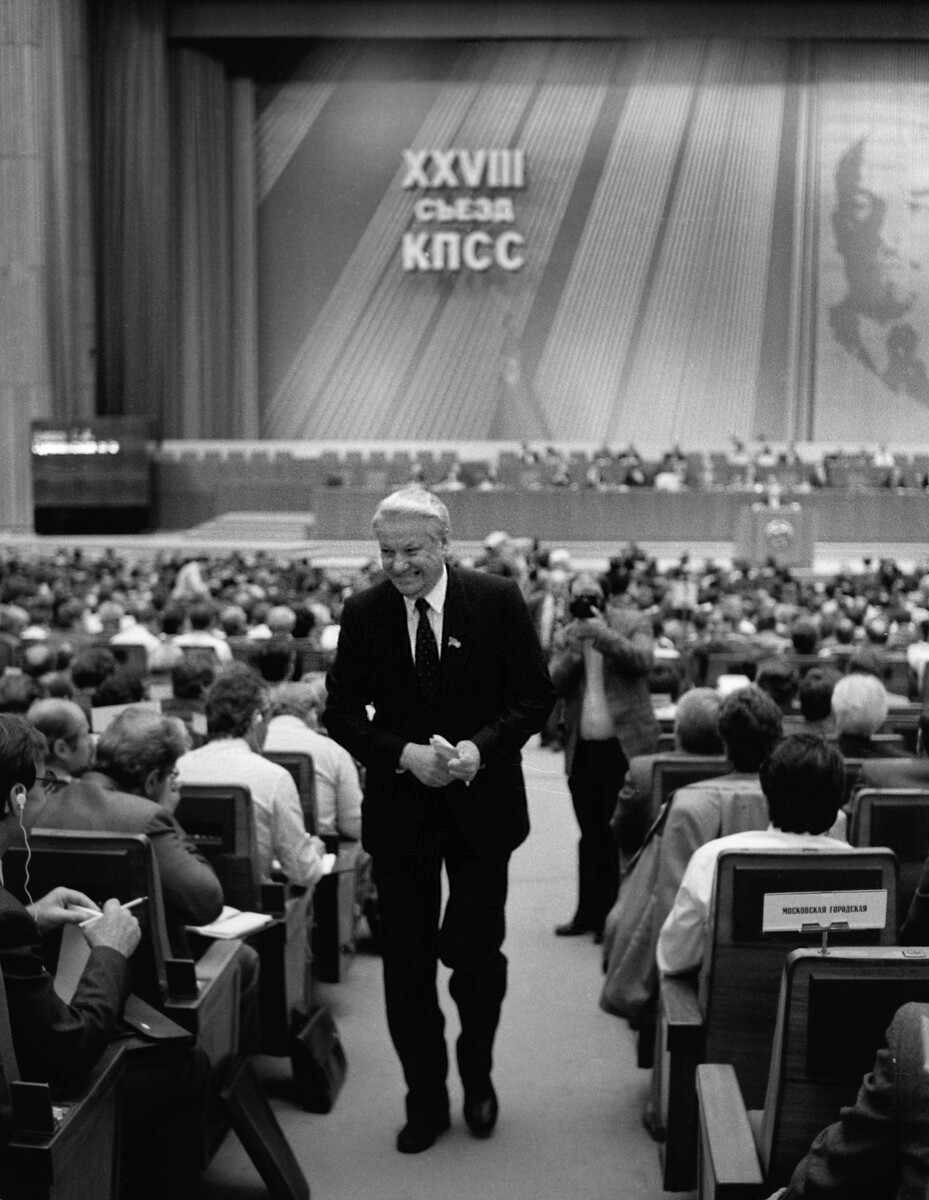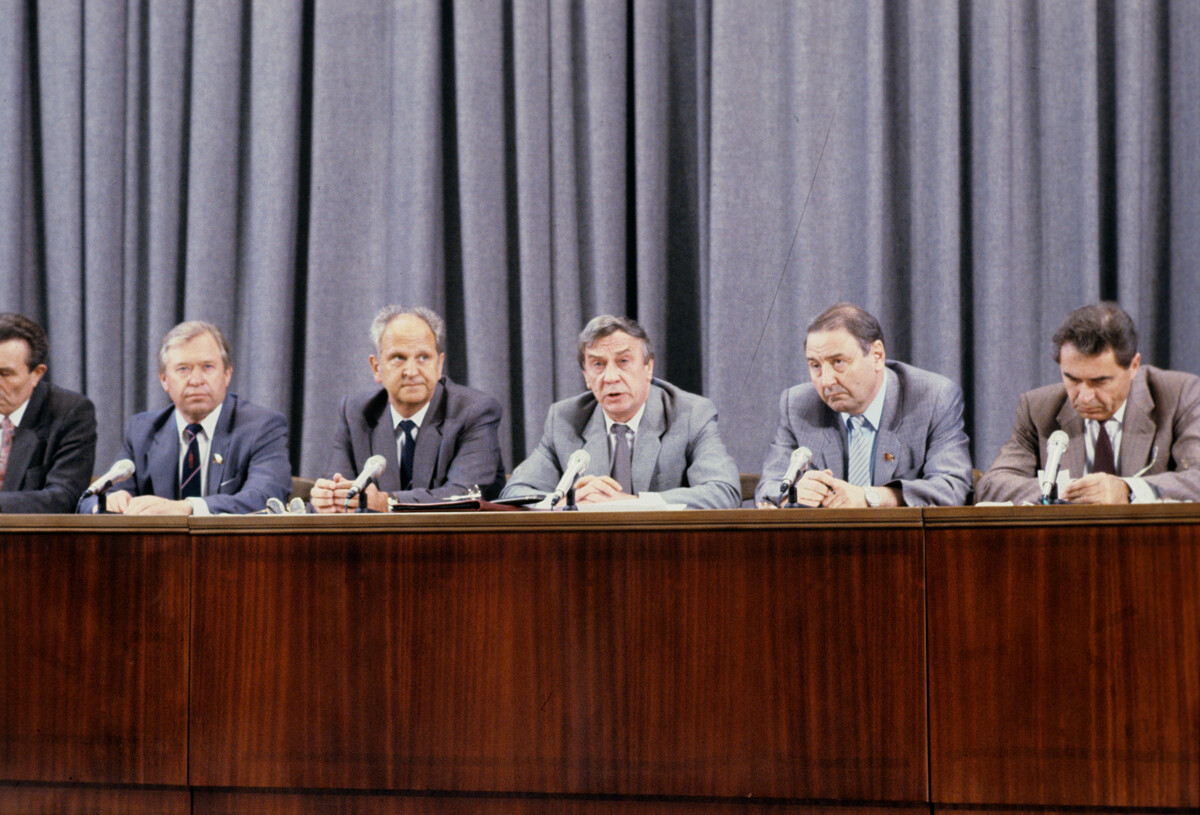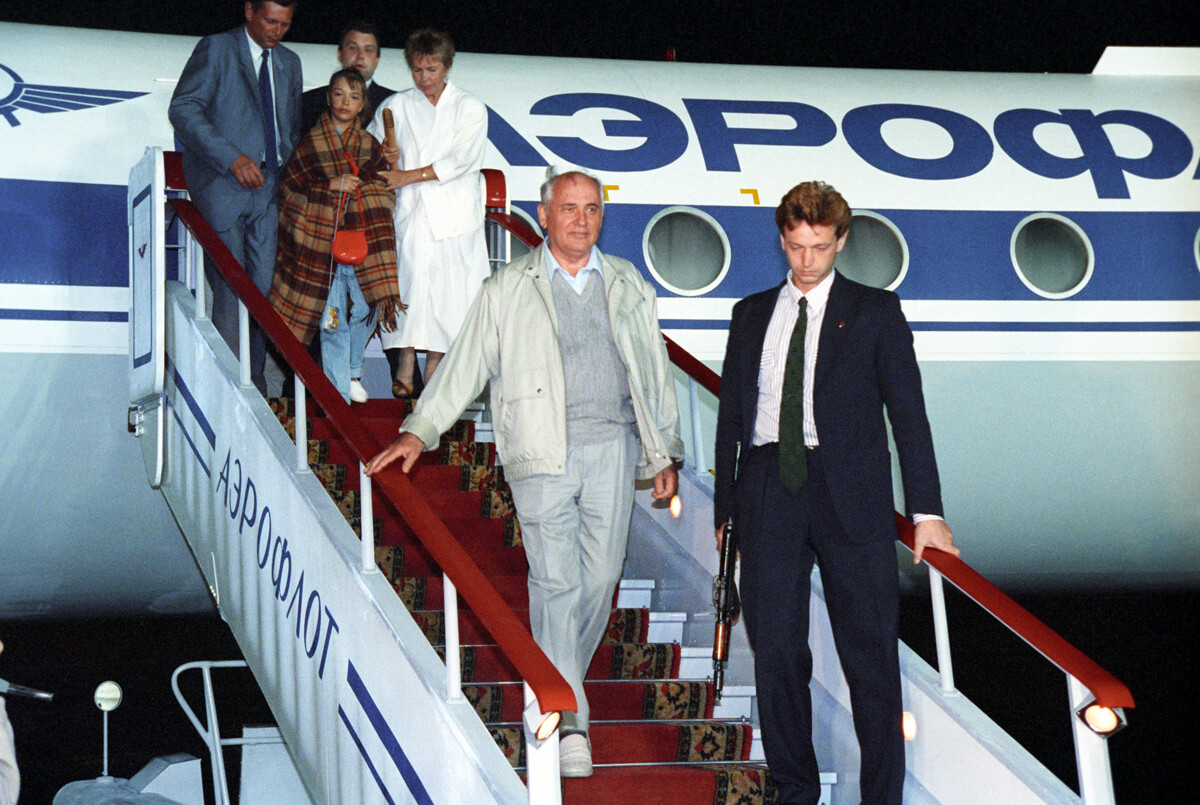
Demonstrators display a giant Russian flag in Red Square after the failed 1991 coup.
Alain Nogues / Sygma / Getty ImagesDuring the times when the USSR existed (1922-1991), the Russian Soviet Federative Socialist Republic (RSFSR) existed inside the USSR. It was the largest republic in terms of area, population and economic power. It accounted for three-quarters of the territory of the USSR, harboring Central and Southern Russia, the North Caucasian territories, all of Siberia and Far East. Byelorussia, Ukraine and the Middle Asian states (contemporary Turkmenistan, Tadzhikistan, Kazakhstan, Uzbekistan) were not parts of the RSFSR.
The RSFSR accounted for over half of the population, two-thirds of the industrial and about half of the agricultural products of the Soviet Union. However, it didn’t have any political autonomy as such, being fully controlled by the government of the USSR.

Boris Yeltsin during the XXVIIIth Congress of the Communist Party of the USSR, after leaving the Party.
Valentin Sobolev/TASSIn May 1990, Boris Yeltsin was elected the Chairman of the Supreme Council of RSFSR – effectively, the head of the republic. In June 1990, the RSFSR issued the Declaration of State Sovereignty of the Russian SFSR, which prioritized the republican laws over the laws of the Soviet Union.
Mikhail Gorbachev, who was President of the USSR at the time, confronted Boris Yeltsin. In response, Yeltsin famously quit the Communist Party of the USSR, while in the RSFSR, anti-Soviet processes began – streets and towns were returned their historical names (Kalinin was renamed back to Tver, Gorky – to Nizhniy Novgorod and so on). In December 1990, Christmas (celebrated on January 7) was declared an official holiday in the RSFSR. Its Constitution was changed to include terms about banks, private property and so on. In July 1991, Boris Yeltsin became the first President of the RSFSR.

Boris Yeltsin addressing the public from an armoured vehicle
AP PhotoThe Soviet government understood that sovereignty of the RSFSR meant the downfall of the Soviet Union. In August 1991, a coup d'état was attempted by communist politicians, who formed the self-proclaimed State Committee on the State of Emergency and deposed Mikhail Gorbachev from his post as the President of the USSR. On August 19, 1991, the army entered Moscow, while Boris Yeltsin called upon the people of Moscow to oppose the communist regime.
In a few days, it became clear that the army wouldn’t follow the orders of the Committee on the State of Emergency. On August 22, 1991, the members of the Committee were arrested, while Boris Pugo, former Minister of Interior of the USSR, shot himself before he was apprehended.

"The Committee on the State of Emergency" (GKChP) that tried to stop Boris Yeltsin from coming to power and dissolving the USSR
Vladimir Rodionov/SputnikThe following day, Yeltsin banned the Communist Party in the RSFSR and nationalized its property: buildings, cars, and funds.
During October and November of 1991, the new government was formed and, by December, the collapse of the USSR was imminent. On December 8, 1991, the Commonwealth of Independent States was created by most of the former USSR members, ending the existence of the USSR.

Mikhail Gorbachev arrives to Moscow, August 22, 1991
Yuri Lizunov/TASSOn December 25, 1991, at 7:38 PM, Mikhail Gorbachev, President of the USSR, officially resigned and the flag of the USSR was changed to the Russian tricolor over the Moscow Kremlin. On the same day, the Supreme Soviet of the RSFSR adopted a law on changing the name of the state: the RSFSR was renamed the Russian Federation (Russia).
If using any of Russia Beyond's content, partly or in full, always provide an active hyperlink to the original material.
Subscribe
to our newsletter!
Get the week's best stories straight to your inbox